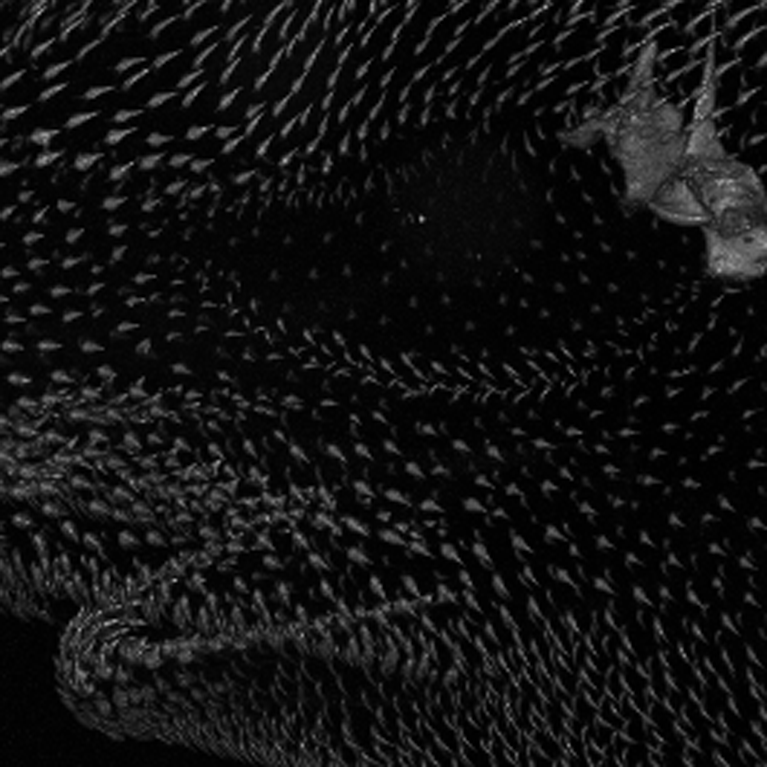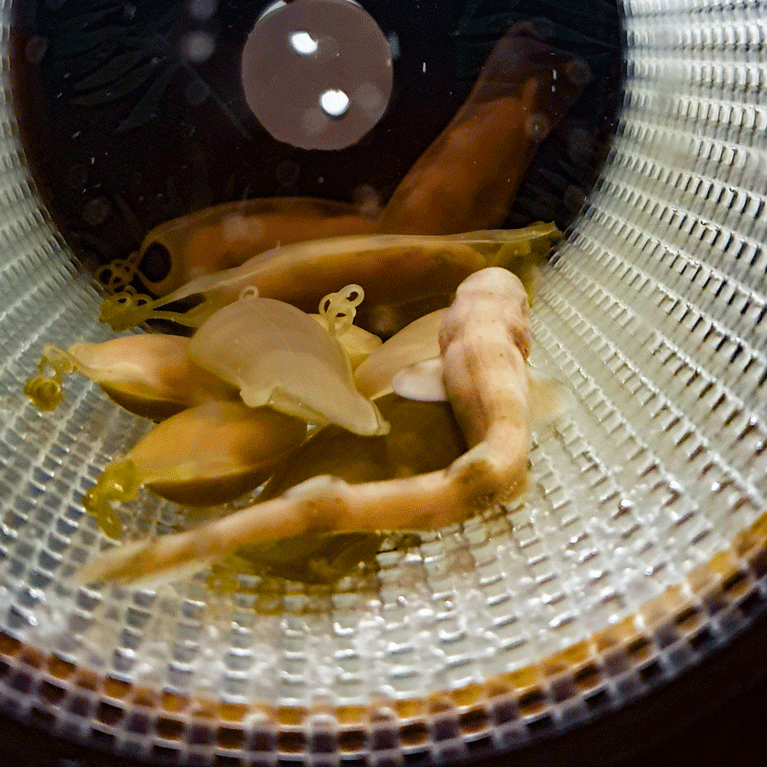Bringing up baby: shark embryos and our warming oceans
The growing pups of egg-laying sharks rely on the ambient ocean temperature to incubate. But what happens as our climate changes? Noémie is thinking ahead, looking to test the impact of a warming and acidifying ocean on the developing embryos of small-spotted catsharks. She’ll be investigating everything from how the embryo develops to whether the sex ratio of the shark pups is skewed by temperature and whether the warmer waters influence how the hatched pups behave. Noémie hopes to influence managers and policymakers to think about how this shark, and more vulnerable ones, will be impacted by our decisions now.
Since I was a child, I have been attracted to all kinds of animals and I always knew I wanted to work with them. However, I was afraid of the ocean and the creatures in it. It wasn’t until my first dive, at the age of 19, that fear turned into passion. After that, I dedicated my studies to oceanography and marine ecology. I first studied larval fish recruitment during El Niño events as an undergraduate, determined the abundance of small pelagic fish using acoustics in the Bay of Biscay (in France) and, as a Master’s student,...



Baby sharks in the grip of climate change: ocean warming and acidification
The main objective of my project is to examine the effects of water acidification and warming on the development, physiology and behaviour of small-spotted catshark embryos and juveniles in an integrated study.
Elasmobranchs have long been considered insensitive to changes in the environment and their vulnerability to climate change has been overlooked, even though such change is likely to increase existing anthropogenic pressures on their communities, particularly by affecting young stages. Since sharks and rays are key species in the marine environment, a sharp decrease in the number of individuals reaching adulthood could lead to the collapse of these species and the balance of the marine food web.
In oviparous shark and ray species, development of the embryo can last several months and is the most vulnerable stage because the eggs are incubated at the temperature of the surrounding water from when they are laid to when they hatch. They open to the environment for about the last two-thirds of the embryo’s development, during which time there is an active exchange of water with the (acidified) water of the external environment. Thus, a temperature increase of up to 4 °C (39 °F) and a pH decrease of 0.5 predicted by 2100 by the IPCC in the north-eastern Atlantic represent a challenge for the survival of oviparous elasmobranchs, which represent 40% of the total number of species. The small-spotted catshark Scyliorhinus canicula is a widely distributed species in the north-eastern Atlantic that is not threatened with extinction. Why study it then? Ultimately, we believe that showing effects on a species that is widely distributed in this area will raise awareness of the fragility of species that do not possess as much ecological versatility to climate change and will help managers and policy-makers to take proactive measures. To this end, the project aims to test the combined effects of water acidification and warming on development, physiology and behaviour in an integrated study that proposes to analyse species’ responses to two ‘Shared Socio-economic Pathways’ scenarios of global socio-economic changes projected to 2100.
- To describe the responses of embryos to climate change. This includes the description and measurement of key parameters of embryonic development as well as the characterisation of the metabolism and activity of the embryo in the egg.
- To look for a change in sex ratio synonymous with sex determination by temperature.
- To detect and quantify abnormalities in skeletal development (malformations, porosity) and alterations in denticle structure (shape, porosity) in response to acidification.
- To describe and quantify changes to individual behaviour (distance travelled, orientation, swimming activity) and group behaviour (aggregation, orientation) in response to acidification and the rise in the temperature of marine water.
Summary of main research results/outcomes
In a 10-month experimental study, we assessed the combined impact of warming and acidification on critical life stages of S. canicula. Using two climate scenarios projected for 2100 (SSP2-4.5 and SSP5-8.5), we found that seasonal temperature fluctuations significantly affected embryo survival. Hatching success dropped from 82% under control and SSP2-4.5 conditions to 11% under SSP5-8.5. Embryos with lower hatching success showed reduced yolk consumption and growth rates, and most failed to transition to internal gills. We then used an individual-based bioenergetics model, coupled with a matrix projection model, to predict the effects of future water temperatures and fishing pressure on the growth and population dynamics of S. canicula and S. stellaris. The model simulated daily growth, survival, and reproductive output, revealing that warmer temperatures could slowed individual growth, leading to slower population growth rates, decreased net reproductive rates, longer generation times, and delayed reproductive values.

